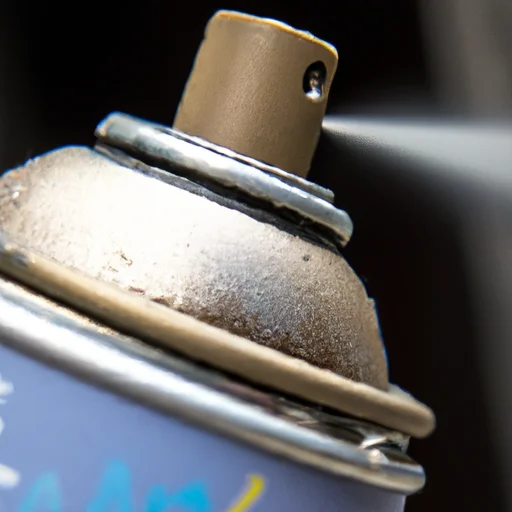If you’ve ever tackled a painting project, you know the struggle of achieving a smooth finish. Uneven brushstrokes, streaks, and drips can turn your masterpiece into a messy disaster. Luckily, there’s a solution: a sprayer. With its ability to evenly distribute paint, a sprayer can give your surfaces a flawlessly smooth and professional look. In this article, we’ll walk you through the steps to achieve that smooth finish you’ve been dreaming of. So grab your sprayer, and let’s get painting!
Achieve A Smooth Finish With A Sprayer
Table of Contents
Choosing the Right Sprayer
When it comes to achieving a smooth finish with a sprayer, choosing the right one for your specific project is crucial. Start by considering the type of project you’ll be working on. Are you painting a small piece of furniture, or tackling a larger surface like a wall or fence? Understanding the scale of your project will help determine the level of power and capacity you need in a sprayer.
Next, take the time to evaluate the sprayer options available to you. There are various types of sprayers such as airless, HVLP (high volume low pressure), and compressed air sprayers. Each type has its own strengths and weaknesses in terms of coverage, control, and ease of use. Research each option and weigh the pros and cons based on your project requirements.
Once you’ve narrowed down your options, select the appropriate sprayer for your needs. Consider factors such as the sprayer’s capacity, power source, and ease of maneuverability. Remember, choosing the right sprayer will make a significant difference in achieving a smooth and professional finish.
Preparing the Surface
Before you begin using the sprayer, it’s essential to properly prepare the surface you’ll be painting. This step is crucial for achieving a smooth and flawless finish. Start by thoroughly cleaning the surface to remove any dirt, dust, or grease. A clean surface ensures better adhesion and helps prevent any imperfections from showing through the paint.
Inspect the surface and remove any imperfections such as bumps, cracks, or peeling paint. Fixing these issues before painting will ensure a smooth and even application. Use a putty knife or a suitable filler to fill in any holes or cracks, and sand the surface to create a smooth base for painting. Taking the time to prepare the surface properly will go a long way in achieving a flawless finish.
Using the Sprayer Correctly
To achieve a smooth finish with a sprayer, it’s essential to use the equipment correctly. Take the time to understand the sprayer settings and how they affect the paint application. Adjusting the nozzle and pressure according to the type of paint and surface you’re working on will ensure an even and consistent finish.
Once you’re familiar with the sprayer settings, practice your technique on a test surface before moving on to the actual project. This allows you to get a feel for the sprayer’s response and adjust your hand movements accordingly. Maintaining a consistent speed and distance between the sprayer and the surface is essential for avoiding streaks and achieving a smooth finish.
Applying the Paint
When it comes to achieving a smooth finish with a sprayer, the quality of paint you use plays a significant role. Always opt for high-quality paint that is specifically formulated for spray application. These paints are designed to flow smoothly through the sprayer and provide a consistent finish.
Before using the paint, mix it properly according to the manufacturer’s instructions. Thoroughly stir the paint to ensure an even distribution of pigments and additives. Failing to mix the paint properly may result in uneven colors or clumps in the finish.
When applying the paint, remember to use thin and even coats. Resist the temptation to apply a thick layer, as it can lead to runs, drips, and an uneven finish. Building up the paint gradually will produce a smoother and more professional result.
Avoiding Common Mistakes
To achieve a smooth finish with a sprayer, it’s essential to avoid common mistakes that can affect the outcome of your project. One common mistake is not cleaning the sprayer properly. Neglecting to clean the sprayer after each use can result in clogging and affect the spray pattern. Take the time to thoroughly clean all the components according to the manufacturer’s instructions to maintain optimal performance.
Another common mistake is not using a suitable primer before painting. Priming creates a smooth and uniform surface for the paint to adhere to, enhancing the overall finish. Depending on the type of surface and paint you’re using, choose a primer that is compatible and apply it before painting.
Lastly, it’s crucial to practice on a test surface before starting the actual project. This allows you to get acquainted with the sprayer and refine your technique. Practicing helps minimize any issues that may arise during the project, giving you more confidence in achieving a smooth finish.
Dealing with Over-Spray
Over-spray can be a concern when using a sprayer, but there are strategies you can employ to minimize its impact. Consider using a spray booth if available, as it provides a controlled environment that contains the over-spray. If a booth is not an option, create a spray area using drop cloths or plastic sheets to protect surrounding surfaces from unwanted paint particles.
Covering surrounding surfaces with plastic or drop cloths is essential to prevent overspray from landing on furniture, floors, or other objects. A thorough covering will save you time and effort in cleaning up afterward. Take the time to secure the covering properly and consider using masking tape to ensure a tight seal.
Lastly, it’s important to protect yourself while using a sprayer. Wear proper safety gear such as goggles, a respirator mask, and gloves to prevent any paint particles from coming into contact with your skin or eyes. By taking these precautions, you can minimize the impact of over-spray and ensure a smooth finish without any unwanted paint particles.
Troubleshooting Common Issues
Even with proper preparation and technique, there can be some common issues that arise during painting. An uneven or streaky finish may occur due to inconsistent spray pattern or improper paint thinning. If faced with this issue, try adjusting the sprayer settings or thinning the paint according to the manufacturer’s recommendations.
Drips or runs in the paint can be frustrating, but they can be prevented with proper technique. To avoid this issue, ensure you’re using thin and even coats, and maintain a consistent speed and distance from the surface. If drips or runs do occur, quickly address them by gently sanding and applying a light touch-up.
Clogging or splattering of the sprayer can disrupt the paint application and affect the finish. Regular maintenance and cleaning of the sprayer after each use are crucial for preventing clogs. If you encounter splattering during painting, check the nozzle for any blockages or inconsistencies and clean or replace it if necessary.
Maintaining the Sprayer
To ensure the longevity and optimal performance of your sprayer, proper maintenance is essential. Clean the sprayer thoroughly after each use to remove any residual paint or debris that can cause clogging or affect the spray pattern. Follow the manufacturer’s instructions for disassembling and cleaning the sprayer components.
After cleaning, store the sprayer properly to protect it from dust, moisture, and accidental damage. Consider using a clean and dry storage area, and protect the sprayer with a cover or bag to prevent any unwanted particles from getting inside. Storing the sprayer properly will extend its lifespan and maintain its efficiency.
Perform regular maintenance on the sprayer to keep it in top condition. Check for any worn or damaged parts and replace them as needed. Lubricate moving parts as recommended by the manufacturer to ensure smooth operation.
Special Considerations for Different Surfaces
Different surfaces require different approaches when using a sprayer. For wood surfaces, it’s important to choose a sprayer with a suitable capacity and power to ensure even coverage. Consider using a stain or paint specifically formulated for wood surfaces to achieve the best results.
When painting metal surfaces with a sprayer, it’s crucial to use a primer that is compatible with the type of metal you’re working with. This helps promote adhesion and prevents rust or corrosion. Choose a paint that is formulated to withstand the elements and provide long-lasting protection.
Spraying plastic surfaces requires a sprayer with low pressure to avoid damaging or distorting the material. Look for a sprayer specifically designed for plastic surfaces or adjust the settings on your sprayer to reduce the pressure. Using a plastic adhesion promoter before painting can also enhance the paint’s bond with the surface.
Finishing Touches
After completing the painting process, allow adequate drying and curing time for the paint to fully set. Rushing this step can result in the paint being easily damaged or marred. Follow the manufacturer’s recommendations for drying time and avoid touching or using the painted surface until it is completely dry.
Once the paint is dry, inspect the surface for any imperfections such as drips, runs, or uneven areas. Any minor imperfections can be gently sanded and touched up with a small brush or roller. Taking the time to address these issues will ensure a flawless and professional finish.
For added protection and durability, consider applying a protective topcoat after the paint has fully cured. A topcoat provides an additional layer of defense against damage, wear, and fading. Choose a topcoat that is compatible with the type of paint you used and apply it according to the manufacturer’s instructions.
In conclusion, achieving a smooth finish with a sprayer requires careful consideration, proper preparation, and correct technique. By choosing the right sprayer for your project, preparing the surface properly, using the sprayer correctly, and following best practices, you can achieve professional and flawless results. Remember to troubleshoot any issues that may arise, maintain your sprayer regularly, and consider any special considerations for different surfaces. With these tips and techniques in mind, you’ll be well on your way to achieving a smooth and beautiful finish with your sprayer.

Upgrade Your Painting Game
Explore our Introduction To The Best Paint Sprayers guide to take your projects to the next level!

